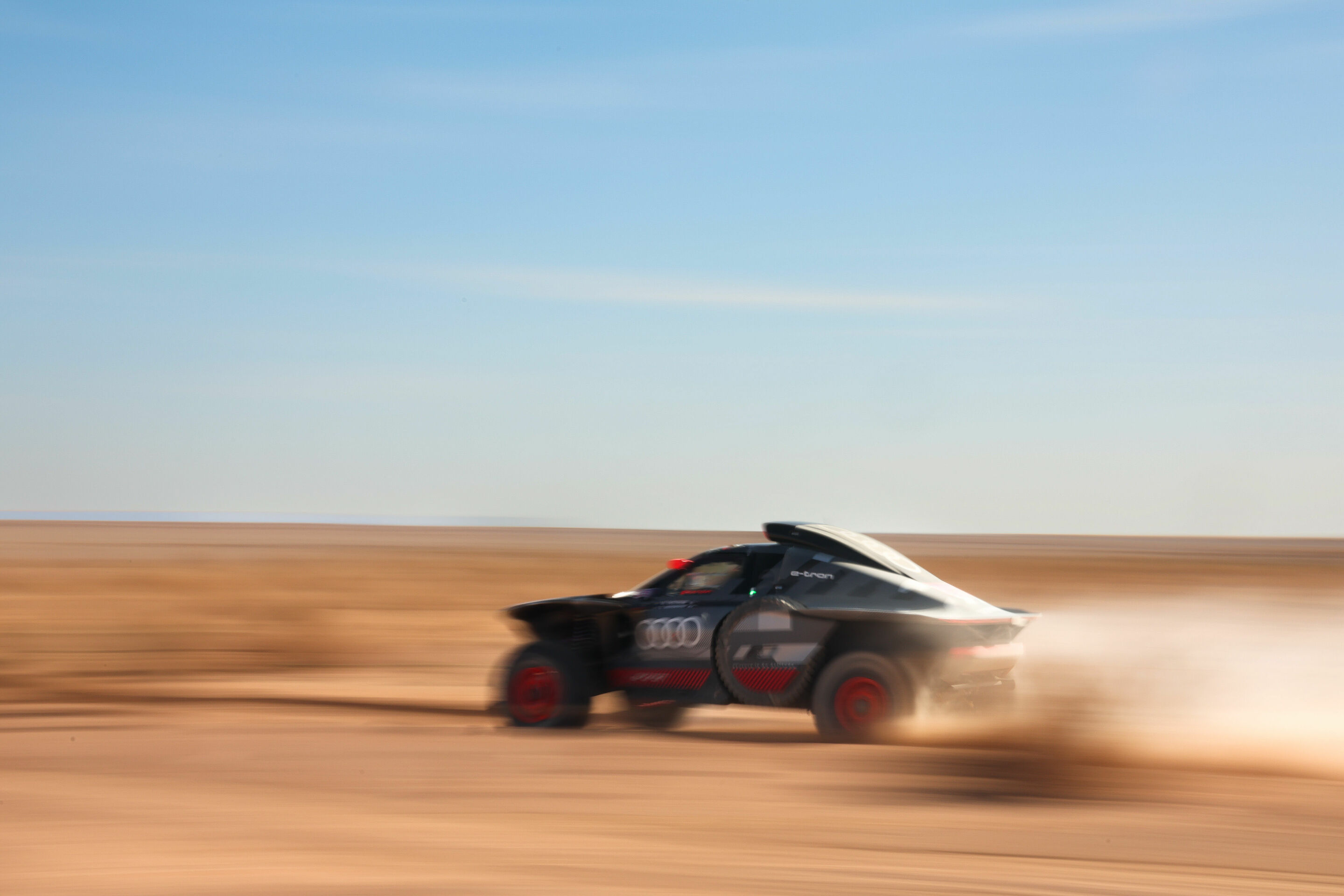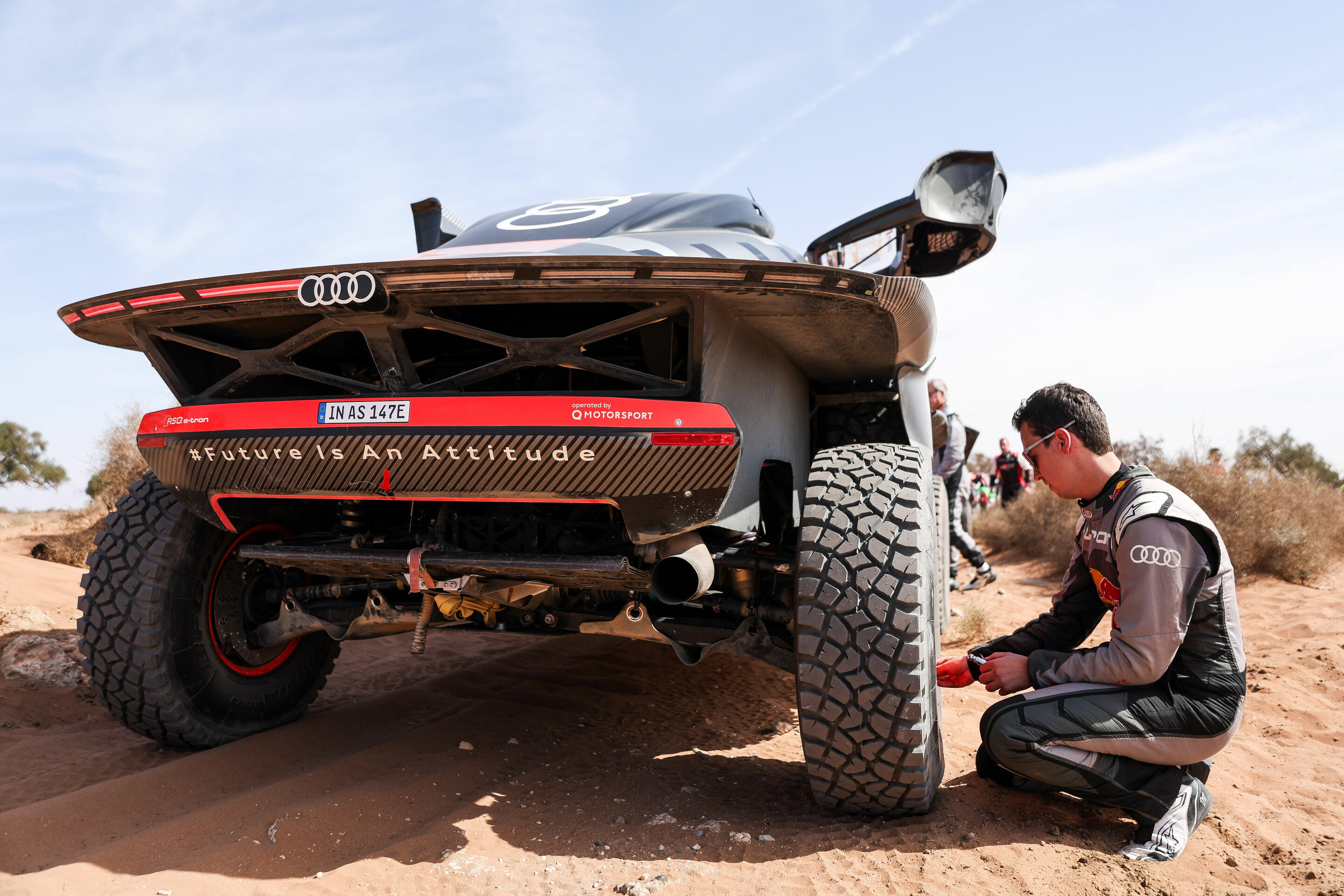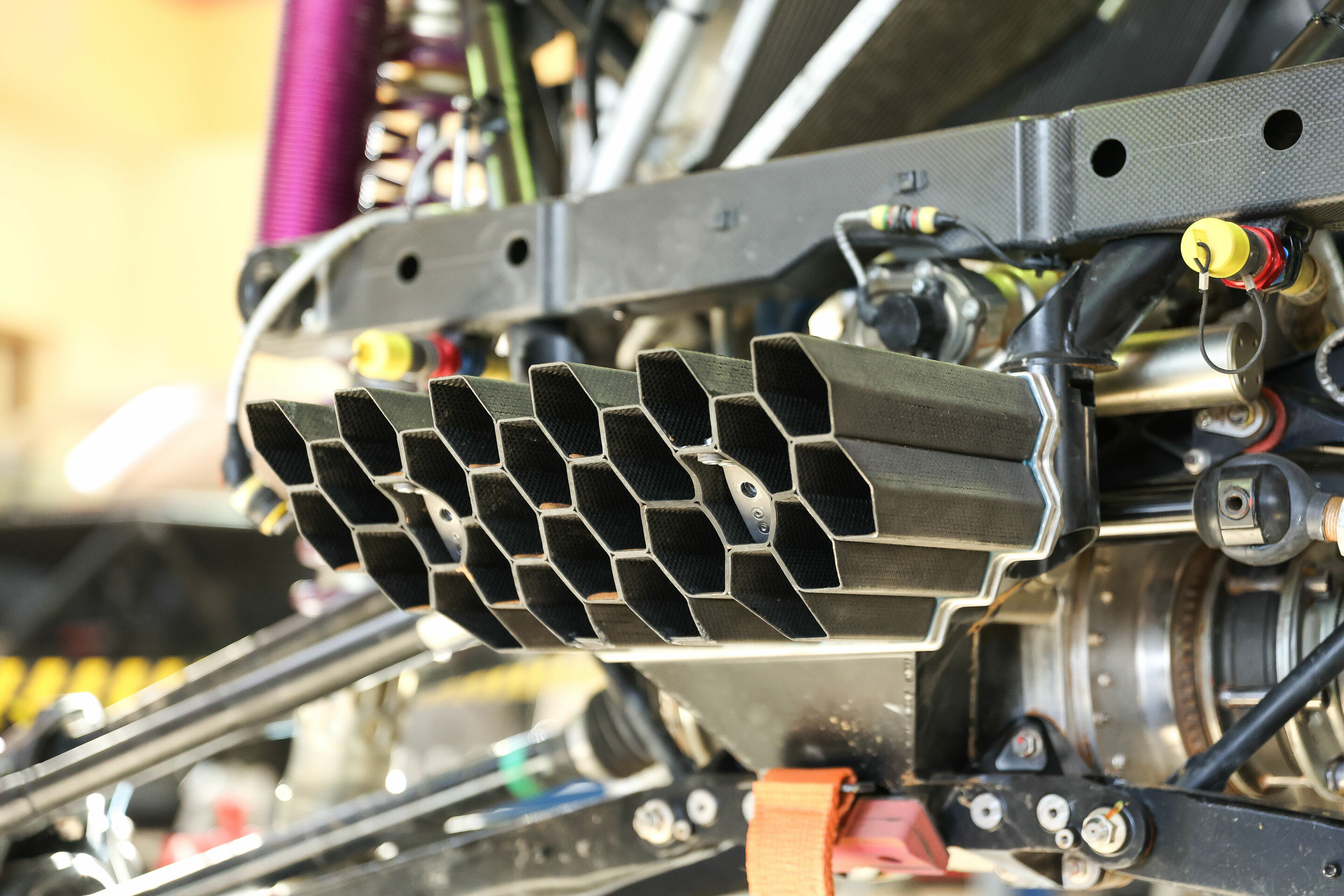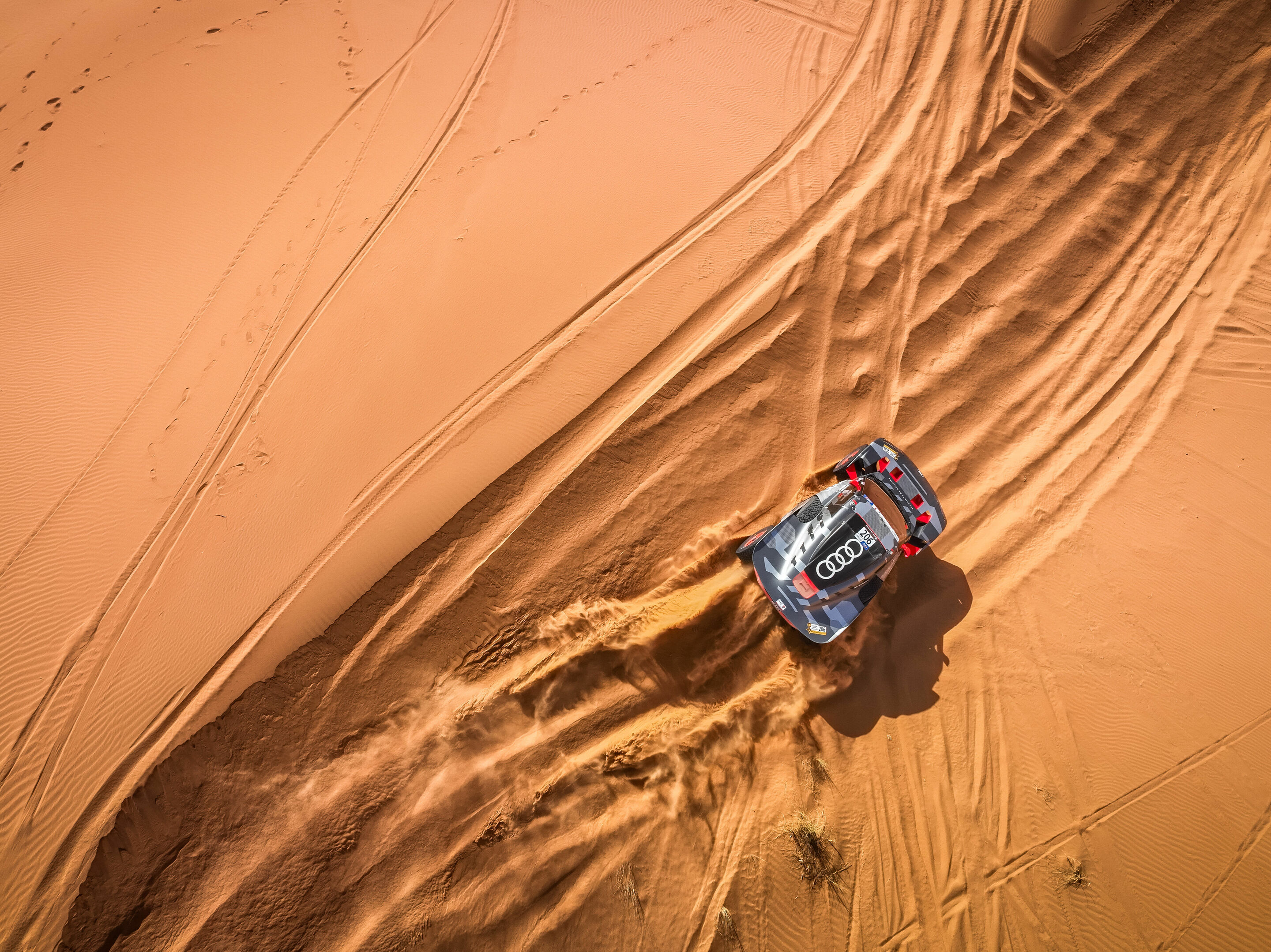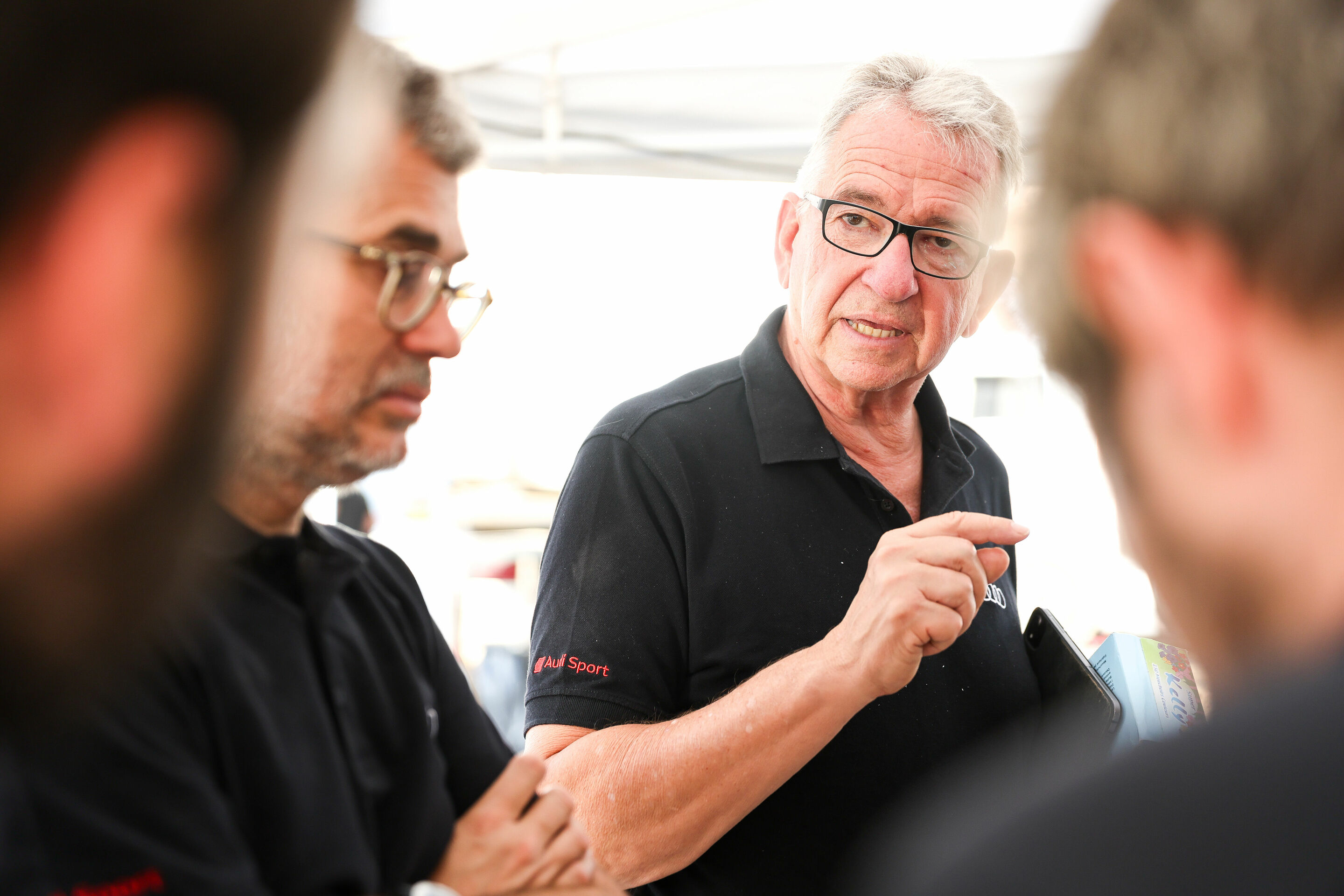The drivetrain concept: Electrically into the future
Back to overviewThe future is electric. Audi has not only adopted this motto for its product development, but is also putting it into practice in motorsport. Once again, Audi demonstrated its pioneering spirit when it came to designing an electrified drive for relentless cross-country rallying.
The electric axle drive of the Audi RS Q e-tron with the motor-generator units on the front and rear axles draws its power from a high-voltage battery system. As there is no charging network in the desert, Audi has devised an innovative charging process. The prototype has an energy converter that charges the high-voltage battery with maximum efficiency while driving. This energy converter is a combination of the highly efficient, further optimized TFSI engine from the DTM and a generator.
This motor-generator unit (MGU) was developed in-house by Audi Sport. It was originally developed for Formula E and has a system efficiency of around 97 percent. Audi Sport has learned valuable lessons from the high-voltage battery and energy management during the first Dakar events and has continuously optimized all systems. For example, recuperation during braking resulted in greater energy recovery than expected. The intermittent operation of the air conditioning system also helps to save energy while maintaining the desired temperature.
The high-voltage battery, the central component of the drive system, weighs 370 kilograms. It has a capacity of 52 kWh and is charged by the energy converter while driving. In principle, the process runs automatically so that the driver and passenger can concentrate on driving and navigating. Energy management is a major challenge here. While the energy consumption on the circuit can be clearly estimated using known parameters and precise simulations, the desert is full of surprises: How long is a day’s stage? How many dune chains have to be crossed, how high are the differences in altitude? How soft or hard is the surface? Will you get stuck or will a navigation error mean another loss of energy?
In addition, all components are subjected to the stresses of high jumps or hard knocks in rocky terrain. The electric drive on the front and rear axles is identical. All components (MGU, inverter, 1-speed gearbox, differential and slip clutch) are housed in an aluminum casing. The engineers have reinforced the inner workings of the MGU and inverter, optimized the cooling and adapted the transmission ratio. The front and rear axles are not connected to each other. The software takes over the function of the center differential.
The two-liter TFSI engine from the Audi RS 5 DTM has proven to be the perfect choice. However, the engineers have adapted the engine for its completely different purpose as part of an energy converter. The power output has been reduced from 450 to around 200 kW and the engine speed has been limited from a maximum of 9,000 to a range between 4,500 and 6,000 rpm. This makes it possible to operate the four-cylinder engine at its optimum point. Pistons, injectors and turbochargers are optimized accordingly. In test bench runs, the engine developers have succeeded in limiting the specific consumption to well below 200 grams per kWh.
The electric drive offers great advantages in the harsh desert environment. Even when driving slowly in sand and therefore with little cooling air flow, there is no temperature problem. The electric motors offer the driver full torque from the first revolution and can be regulated very precisely. The usual gearshift pauses of a traditional combustion engine are eliminated – and with them the risk of getting stuck in the sand. The driver can therefore move the car very precisely with the accelerator pedal through all speed ranges and concentrate fully on driving. The electric drive is also unaffected by air pressure, temperature and humidity – unlike a combustion engine.
